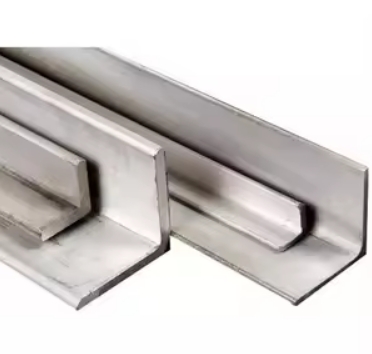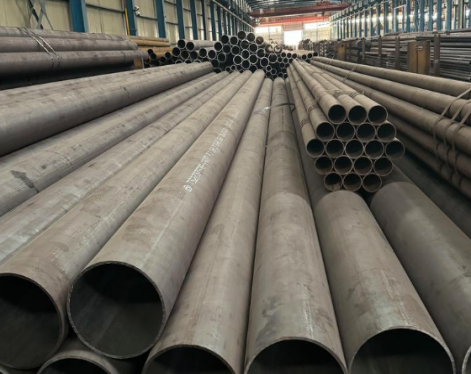Zinc is a common metal material with good anti-corrosion properties, so it is widely used in industrial production. The combination of zinc and steel - galvanized steel, has been widely used in construction, manufacturing and other fields. Among them, galvanized angle steel is a common building material, and its processing process has also attracted much attention.
The angle steel galvanizing process usually includes the following steps:
(1) Pretreatment: Clean the angle steel surface to remove impurities, oil stains and oxides. Surface treatment can be performed by sandblasting, powder spraying or using chemical cleaning agents.
(2) Pickling: Soak the cleaned angle steel in an acid solution, usually using dilute hydrochloric acid or sulfuric acid for pickling. Pickling can remove the oxide scale and rust on the steel surface, making it easier for the surface to contact with the plating solution.
(3) Plating solution preparation: Prepare a plating solution containing zinc ions. The plating solution usually consists of zinc salts and other additives (such as chelating agents, acidifiers and emulsifiers) to provide uniform coating and corrosion resistance.
(4) Galvanizing: The pickled angle steel is immersed in the plating solution, and the zinc ions are reduced and deposited on the surface of the angle steel by electrolysis. Direct current or intermittent electroplating is usually used for galvanizing to obtain a uniform and dense coating.
(5) Cleaning and treatment: After galvanizing, the angle steel needs to go through a series of cleaning and treatment processes to remove residual plating solution and other impurities. These processes may include rinsing, electrophoretic rinsing, heating and drying, etc.
(6) Inspection and packaging: The galvanized angle steel is inspected for quality, surface uniformity, adhesion and corrosion resistance. After inspection, qualified angle steel can be packaged and stored for subsequent use.
The processing of galvanized angle steel requires cutting of materials. During the cutting process, professional cutting equipment such as shearing machines and hacksaws are required to ensure the accuracy and efficiency of cutting. At the same time, in order to ensure the smooth surface of the cut angle steel, grinding is also required.
Next, the angle steel needs to be punched. Punching refers to making holes in angle steel for subsequent installation and use. There are many ways to punch holes, such as mechanical punching, CNC punching, etc. Among them, CNC punching has the advantages of high efficiency and high precision, so it has been widely used in modern processing.
Then, the angle steel needs to be bent. Bending refers to bending the angle steel into the required shape to meet different building needs. There are many ways to bend, such as manual bending, mechanical bending, etc. Among them, mechanical bending has the advantages of high efficiency and high precision, so it has been widely used in modern processing.
The processing flow of galvanized angle steel includes galvanizing, material cutting, punching, bending and other links. During the processing, professional equipment and tools need to be used to ensure the accuracy and efficiency of the processing. At the same time, attention should be paid to safety issues to ensure that no accidents occur during the processing.
1. Angle steel galvanizing
The angle steel galvanizing process usually includes the following steps:(1) Pretreatment: Clean the angle steel surface to remove impurities, oil stains and oxides. Surface treatment can be performed by sandblasting, powder spraying or using chemical cleaning agents.
(2) Pickling: Soak the cleaned angle steel in an acid solution, usually using dilute hydrochloric acid or sulfuric acid for pickling. Pickling can remove the oxide scale and rust on the steel surface, making it easier for the surface to contact with the plating solution.
(3) Plating solution preparation: Prepare a plating solution containing zinc ions. The plating solution usually consists of zinc salts and other additives (such as chelating agents, acidifiers and emulsifiers) to provide uniform coating and corrosion resistance.
(4) Galvanizing: The pickled angle steel is immersed in the plating solution, and the zinc ions are reduced and deposited on the surface of the angle steel by electrolysis. Direct current or intermittent electroplating is usually used for galvanizing to obtain a uniform and dense coating.
(5) Cleaning and treatment: After galvanizing, the angle steel needs to go through a series of cleaning and treatment processes to remove residual plating solution and other impurities. These processes may include rinsing, electrophoretic rinsing, heating and drying, etc.
(6) Inspection and packaging: The galvanized angle steel is inspected for quality, surface uniformity, adhesion and corrosion resistance. After inspection, qualified angle steel can be packaged and stored for subsequent use.

2. Cutting steel angle
The processing of galvanized angle steel requires cutting of materials. During the cutting process, professional cutting equipment such as shearing machines and hacksaws are required to ensure the accuracy and efficiency of cutting. At the same time, in order to ensure the smooth surface of the cut angle steel, grinding is also required.
3. Hole punching
Next, the angle steel needs to be punched. Punching refers to making holes in angle steel for subsequent installation and use. There are many ways to punch holes, such as mechanical punching, CNC punching, etc. Among them, CNC punching has the advantages of high efficiency and high precision, so it has been widely used in modern processing.
4. Bending angle iron
Then, the angle steel needs to be bent. Bending refers to bending the angle steel into the required shape to meet different building needs. There are many ways to bend, such as manual bending, mechanical bending, etc. Among them, mechanical bending has the advantages of high efficiency and high precision, so it has been widely used in modern processing.The processing flow of galvanized angle steel includes galvanizing, material cutting, punching, bending and other links. During the processing, professional equipment and tools need to be used to ensure the accuracy and efficiency of the processing. At the same time, attention should be paid to safety issues to ensure that no accidents occur during the processing.









